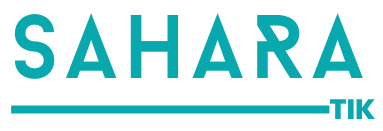The term “översägt” might seem unfamiliar to many, but it carries significant value in various contexts. In this article, we will explore the meaning behind this word, its relevance, and how it is applied in different scenarios. By diving deeper into the topic, we aim to shed light on the importance of understanding such lesser-known terms and their applications in our everyday lives.
What is Översägt?
The term “översäg’t” is rooted in Swedish, and its literal translation means “overstated” or “exaggerated.” It is used to describe situations or statements where something has been described with more emphasis than necessary. This exaggeration may occur in conversations, writings, or even within the media. The word plays a crucial role in identifying and understanding when facts are being overstated, which can often lead to misunderstandings. In essence, “översäg’t” reminds us to be mindful of how we present information and to be aware of when others might be overstating or embellishing facts.
Why Översägt is Important in Communication
In communication, whether verbal or written, it is vital to convey information accurately. When something is “översäg’t,” or exaggerated, it can lead to misinterpretation. Overstatements can distort the truth, leading to false perceptions or expectations. This can be particularly problematic in areas such as news reporting, advertising, or even casual conversations where precision in language is essential. By understanding the implications of “översäg’t,” individuals can become more conscious communicators. Recognizing exaggerated statements helps in discerning fact from fiction, allowing us to approach information with a critical mindset.
How Översägt Affects Perceptions
Exaggeration can significantly impact how people perceive a situation or idea. When something is described in an “översäg’t” manner, it can create an inflated sense of importance or urgency. For example, in marketing, products are often portrayed as more effective or beneficial than they are in reality. This tactic, while common, can mislead consumers into making decisions based on overstated claims. Similarly, in personal interactions, when someone describes an event or issue as being more dramatic or severe than it actually is, it can lead to unnecessary worry or excitement. Being aware of “översäg’t” in these contexts allows for more measured responses and better decision-making.
Examples of Översägt in Everyday Life
We encounter exaggerations, or “översägt” statements, in various aspects of life. Here are a few examples of where this might occur:
News Reporting
Headlines often use sensational language to attract readers. While the actual story may not be as dramatic, the exaggerated headline grabs attention. This is a classic example of “översäg’t” at play in the media.
Advertising:Companies frequently make bold claims about their products. “The best phone ever made” or “A revolutionary cleaning solution” are examples of overstated marketing phrases that aim to capture the consumer’s interest, even if the product doesn’t fully live up to the hype.
Personal Conversations
In social settings, people sometimes exaggerate their achievements or the challenges they face. While it can be a way to express emotions or make a point, it often leads to an embellished version of the truth. Recognizing “översäg’t” in these situations helps in filtering out the unnecessary hype and focusing on the actual facts.
How to Avoid Being Översägt
While exaggerating can sometimes feel harmless, it’s important to be mindful of how it affects communication. Here are some ways to avoid being “översäg’t”:
Be Honest and Clear
When sharing information, focus on the truth. Avoid adding unnecessary details or emphasis that may distort the reality of the situation.
Stay Grounded
In moments of excitement or frustration, it’s easy to overstate your case. Take a step back, evaluate the situation, and present it as accurately as possible.
Practice Active Listening
When you’re the one receiving information, practice active listening to catch any “översäg’t” details. This helps in asking clarifying questions and getting to the core of the message.
Fact-Check
Especially in the digital age, where misinformation can spread quickly, always fact-check information that seems exaggerated. This ensures you’re not misled by “översäg’t” content.
The Role of Översägt in Social Media
In today’s social media-driven world, exaggeration is more prevalent than ever. Posts, photos, and videos are often curated to present an idealized version of reality. While this is often done for entertainment or aesthetic purposes, it can have negative effects on people’s perceptions of their own lives. When social media users are constantly exposed to “översäg’t” versions of others’ experiences, it can lead to feelings of inadequacy or the pressure to live up to unrealistic standards. Understanding the role of “översäg’t” on social platforms allows users to engage with content more critically and recognize the difference between genuine and exaggerated portrayals.
Översägt in the Business World
In business, exaggeration can be a double-edged sword. While a certain level of enthusiasm is needed to market products and services, crossing the line into “översäg’t” territory can damage a company’s reputation. Customers who feel misled by exaggerated claims are likely to lose trust in a brand, leading to negative reviews and decreased loyalty. Businesses that prioritize transparency and honesty in their messaging are more likely to build long-term relationships with their customers. By avoiding “översäg’t” language, companies can present their offerings in a way that is both appealing and truthful.
The Fine Line Between Enthusiasm and Exaggeration
It is essential to differentiate between enthusiasm and exaggeration. While it’s natural to be excited about certain things and express that excitement, there’s a fine line where enthusiasm can turn into exaggeration. When sharing something that you’re passionate about, it’s important to stay factual while still conveying your excitement. This prevents “översäg’t” statements while still allowing your genuine emotions to come through.
Conclusion
Understanding “översägt” and its role in communication is key to navigating today’s information-rich world. Whether you’re engaging in conversations, consuming media, or making decisions, being able to identify and avoid exaggeration helps you stay grounded in reality. It also improves your ability to communicate effectively and prevents misunderstandings. By recognizing the impact of “översäg’t” in everyday life, we can foster clearer, more honest interactions with others and develop a more discerning approach to the information we receive.
FAQs
What does “översägt” mean?
“Översägt” is a Swedish term that translates to “overstated” or “exaggerated” in English. It refers to the act of describing something with more emphasis than necessary.
Why is it important to avoid exaggeration in communication?
Exaggeration can lead to misunderstandings, misinterpretation, and even false expectations. Being clear and truthful helps in maintaining accurate communication.
How can I avoid using “översägt” language in conversations?
Focus on being honest and clear, avoid unnecessary emphasis, and practice active listening to ensure you’re not distorting facts.
Is “översägt” common in marketing?
Yes, exaggeration is common in marketing to capture attention. However, it’s important for businesses to balance enthusiasm with honesty to avoid misleading consumers.
How does social media contribute to “översägt” portrayals?
On social media, users often present idealized or exaggerated versions of their lives. Recognizing this can help in engaging with content more critically.











